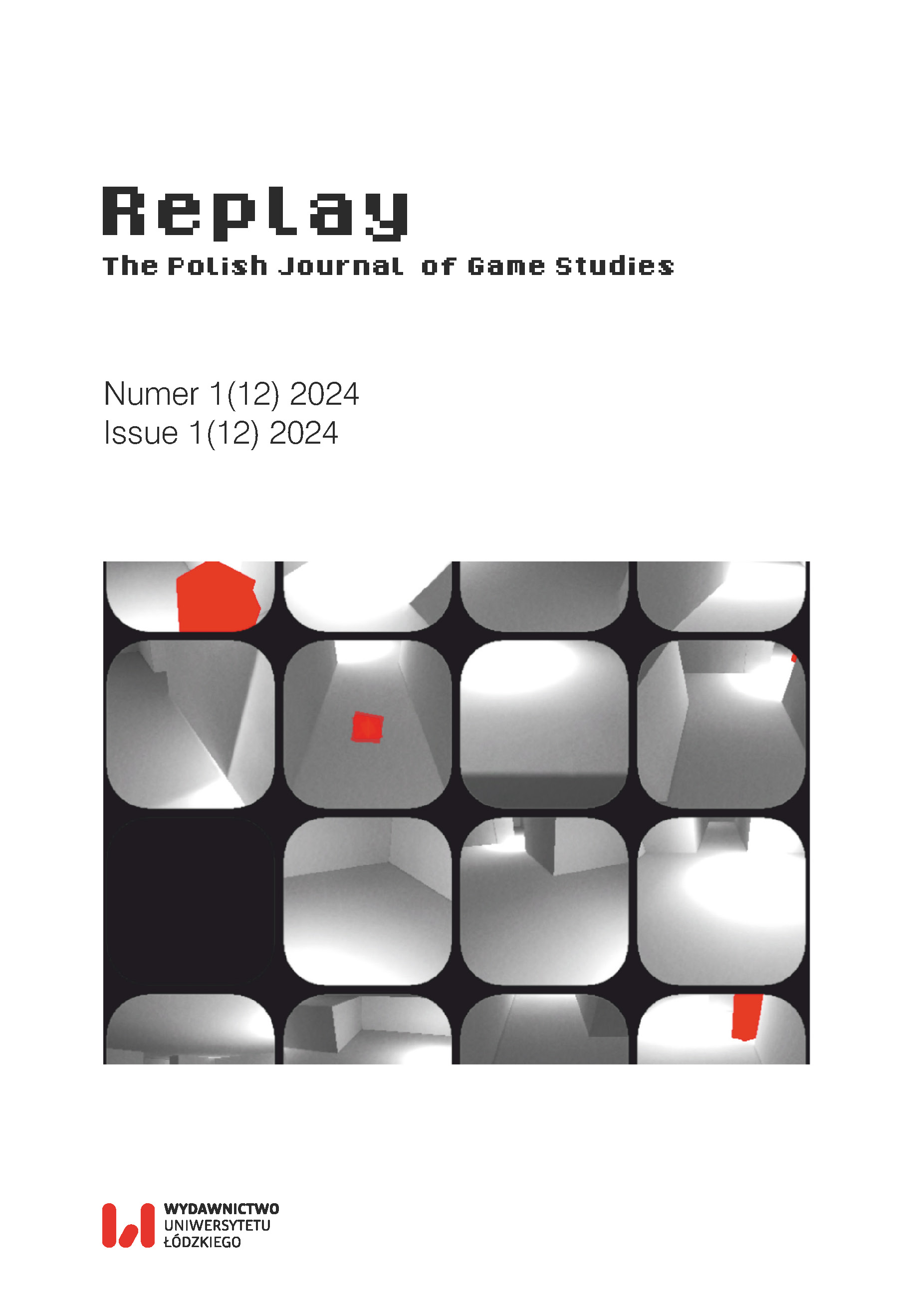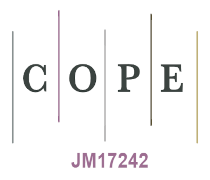Looking for Cosy in All the Wrong Places. Cosiness and Tamed Sublime of "No Man’s Sky"
DOI:
https://doi.org/10.18778/2391-8551.12.03Keywords:
game studies, cosy, sublime, retrofuturism, spatial aestheticAbstract
In this article, I argue that some games may elicit cosy sentiments even if they are centred on a premise not usually associated with cosiness – for example the infinity of the universe. They do so not by a fluke, and cosy spaces in these games do not only appear as designated spaces apart. Evoking a cosy feeling is done by specific game mechanics or design choices, “taming” the sublime premise of the game discussed. The architecture and mechanics of this unexpected cosiness may offer a new look at the fringe cases of cosy aesthetics, perhaps broadening the understanding of this phenomenon.
References
Allen, I. (Director). (1965–1968). Lost in Space. CBS.
Google Scholar
Betts, T. (2014). An Investigation of the Digital Sublime in Video Game Production [Doctoral dissertation, University of Huddersfield]. Huddersfield Repository. https://eprints.hud.ac.uk/id/eprint/25020/
Google Scholar
Carpenter, J. (2022). The Aesthetics of Human-Machine Interaction: Generative Textuality in Hello Games’s No Man’s Sky. Journal of Aesthetics and Phenomenology, 9(2), 173–190. https://www.tandfonline.com/doi/abs/10.1080/20539320.2022.2150464
Google Scholar
DOI: https://doi.org/10.1080/20539320.2022.2150464
Castania, G. (2022, September 16). Best Cozy Games On Steam. TheGamer. https://www.thegamer.com/steam-pc-best-cozy-games/#journey (accessed on March 6, 2024).
Google Scholar
Clark, K.E. (2022). Unravelling Narratives of Empire in No Man’s Sky. Przegląd Kulturoznawczy, 54(4), 585–598. https://doi.org/10.4467/20843860PK.22.039.17093
Google Scholar
DOI: https://doi.org/10.4467/20843860PK.22.039.17093
Encheva, L. (2018). Flow, Freedom, and the Gamified Sublime. In: T. Trifonova (Ed.), Contemporary Visual Culture and the Sublime (pp. 131–141). Routledge.
Google Scholar
DOI: https://doi.org/10.4324/9781315299150-9
Expedition Seven: Leviathan. (2022, May 25). No Man’s Sky. https://www.nomanssky.com/2022/05/expedition-seven-leviathan/ (accessed on March 6, 2024).
Google Scholar
Fedorova, K. (2018). The Ambiguity Effects of the Techno-Sublime. In: T. Trifonova (Ed.), Contemporary Visual Culture and the Sublime (pp. 142–150). Routledge.
Google Scholar
DOI: https://doi.org/10.4324/9781315299150-10
Fraser, E. (2016). Awakening in Ruins: The Virtual Spectacle of the End of the City in Video Games. Journal of Gaming & Virtual Worlds, 8(2), 177–196. https://doi.org/10.1386/jgvw.8.2.177_1
Google Scholar
DOI: https://doi.org/10.1386/jgvw.8.2.177_1
Gibson, W. (1988). The Gernsback Continuum. Invention & Technology, 4(1). https://www.inventionandtech.com/content/gernsback-continuum-1 (accessed on March 6, 2024).
Google Scholar
Godbey, E. (2014). Speed and Destruction at the Fair. In: J. Miller, M. Howell (Eds.), Motorsports and American Culture: From Demolition Derbies to NASCAR (pp. 39–51). Rowman & Littlefield Publishers.
Google Scholar
Higgins, C. (2014). No Man’s Sky Would Take 5 Billion Years to Explore. Wired UK. https://www.wired.co.uk/article/no-mans-sky-planets (accessed on March 6, 2024).
Google Scholar
Hobby, B., & Bloom, H. (Eds.) (2010). The Sublime. Chelsea House Publishers.
Google Scholar
Hodges, M. (Director). (1980). Flash Gordon. Universal Pictures.
Google Scholar
Jenkins, H. (2003). Game Design as Narrative Architecture. Polish Association for American Studies. https://paas.org.pl/wp-content/uploads/2012/12/09.-Henry-Jenkins-Game-Design-As-Narrative-Architecture.pdf (accessed on March 6, 2024).
Google Scholar
Juul, J. (2010). In Search of Lost Time: On Game Goals and Failure Costs. FDG ‘10: Proceedings of the Fifth International Conference on the Foundations of Digital Games. Association for Computing Machinery. https://doi.org/10.1145/1822348.1822360
Google Scholar
DOI: https://doi.org/10.1145/1822348.1822360
Kain, E. (2016, August 20). “No Man’s Sky” Review: Dead Space. Forbes. https://www.forbes.com/sites/games/2016/08/20/no-mans-sky-review-dead-space/ (accessed on March 6, 2024).
Google Scholar
Latham, R. (Ed.) (2014). The Oxford Handbook of Science Fiction. Oxford University Press.
Google Scholar
DOI: https://doi.org/10.1093/oxfordhb/9780199838844.013.0008
Machkovech, S. (2016, August 15). No Man’s Sky Review: Total Eclipse of the Galaxy’s Heart. Ars Technica. https://arstechnica.com/gaming/2016/08/no-mans-sky-review-total-eclipse-of-the-galaxys-heart/ (accessed on March 6, 2024).
Google Scholar
Martin, P. (2011). The Pastoral and the Sublime in Elder Scrolls IV: Oblivion. Game Studies, 11(3).
Google Scholar
Ngai, S. (2009). Ugly Feelings. Harvard University Press.
Google Scholar
Reinhard, A. (2021). Archeology of Abandoned Human Settlements in No Man’s Sky: A New Approach to Recording and Preserving User-Generated Content in Digital Games. Games and Culture, 16(7), 855–884. https://doi.org/10.1177/15554120211005236
Google Scholar
DOI: https://doi.org/10.1177/15554120211005236
Salen, K., & Zimmerman, E. (2004). Rules of Play: Game Design Fundamentals. The MIT Press.
Google Scholar
Shaw, P. (2006). The Sublime. Routledge.
Google Scholar
DOI: https://doi.org/10.4324/9780203962732
Shinkle, E. (2012). Videogames and the Digital Sublime. In: A. Karatzogianni & A. Kunstman (Eds.), Digital Cultures and the Politics of Emotion: Feelings, Affect and Technological Change (pp. 94–108). Palgrave Macmillan UK.
Google Scholar
DOI: https://doi.org/10.1057/9780230391345_6
Short, T.X., Ordon, A., Hurd, D., Howe, C., Forbes, J., Eiserloh, S., Diaz, J., Cook, D, & Meiners, R. (2018, January 24). Cozy games. Lostgarden. https://lostgarden.home.blog/2018/01/24/cozy-games/ (accessed on March 6, 2024).
Google Scholar
Smith, A. (2012, March 12). Life Flashing By: Dys4ia. Rock, Paper, Shotgun. https://www.rockpapershotgun.com/life-flashing-by-dys4ia (accessed on March 6, 2024).
Google Scholar
Spokes, M. (2020). Gaming and The Virtual Sublime: Rhetoric, Awe, Fear, and Death in Contemporary Video Games. Emerald Publishing Limited.
Google Scholar
DOI: https://doi.org/10.1108/9781838674311
Stuart, K. (2016, August 19). No Man’s Sky is Elite for the 21st century. Pointless? Maybe – but also sublime. The Guardian. https://www.theguardian.com/technology/2016/aug/19/no-mans-sky-elite (accessed on March 6, 2024).
Google Scholar
Sullivan, A., Stanfill, M., & Salter, A. (2023). The Constraints of Cozy Games: Boyfriend Dungeon and Consent in Queer Play. In: P. Lopes, F. Luz, A. Liapis, & H. Engström (Eds.), FDG ‘23: Proceedings of the 18th International Conference on the Foundations of Digital Games. Association for Computing Machinery. https://doi.org/10.1145/3582437.3582452
Google Scholar
DOI: https://doi.org/10.1145/3582437.3582452
Swink, S. (2017). Game Feel: A Game Designer’s Guide to Virtual Sensation. CRC Press.
Google Scholar
Trifonova, T. (2018). Of Fake and Real Sublimes. In: T. Trifonova (Ed.), Contemporary Visual Culture and the Sublime (pp. 74–87). Routledge.
Google Scholar
DOI: https://doi.org/10.4324/9781315299150-5
Vella, D. (2015). No Mastery without Mystery: Dark Souls and the Ludic Sublime. Game Studies, 15(1).
Google Scholar
Warr, P. (2015, July 7). No Man’s Sky Interview: Sean Murray Vs The Hype Train. Rock, Paper, Shotgun. https://www.rockpapershotgun.com/no-mans-sky-interview (accessed on March 6, 2024).
Google Scholar
Waszkiewicz, A., & Bakun, M. (2020). Towards the Aesthetics of Cozy Video Games. Journal of Gaming & Virtual Worlds, 12(3), 225–240. https://doi.org/10.1386/jgvw_00017_1
Google Scholar
DOI: https://doi.org/10.1386/jgvw_00017_1
Zagal, J., Debus, M., & Cardona-Rivera, R. (2019, October 21–25). On the Ultimate Goals of Games: Winning, Finishing, and Prolonging. The 13th International Philosophy of Computer Games Conference, Petersburg, Russia. http://rogel.io/content/2-publications/zagal2019ultimate.pdf
Google Scholar
Anthropy, A. (2012). Dys4ia. Newgrounds.
Google Scholar
Blizzard Entertainment. (2014). Hearthstone. Blizzard Entertainment.
Google Scholar
CCP Games. (2003). EVE Online. CCP Games.
Google Scholar
Cloud Imperium Games. (TBA). Star Citizen. Cloud Imperium Games.
Google Scholar
ConcernedApe. (2016). Stardew Valley. Chucklefish.
Google Scholar
Egosoft. (2018). X4: Foundations. Egosoft
Google Scholar
Fox, T. (2015). Undertale. World: Toby Fox.
Google Scholar
FromSoftware. (2014). Dark Souls II. Bandai Namco, FromSoftware.
Google Scholar
Frontier Dev UK. (2015). Elite Dangerous. Frontier Developments.
Google Scholar
Hello Games. (2016). No Man’s Sky. Hello Games
Google Scholar
Infinite Fall. (2017). Night in the Woods. Finji.
Google Scholar
Kitfox Games. (2021). Boyfriend Dungeon. Kitfox Games
Google Scholar
Origin Systems. (1993). Wing Commander: Privateer. Origin Systems, Electronic Arts.
Google Scholar
Re-Logic. (2011). Terraria. Re-Logic.
Google Scholar
Downloads
Published
How to Cite
Issue
Section
License

This work is licensed under a Creative Commons Attribution-NonCommercial-NoDerivatives 4.0 International License.










